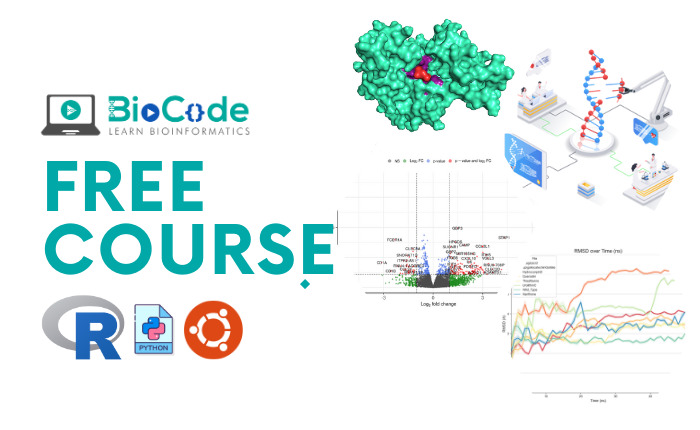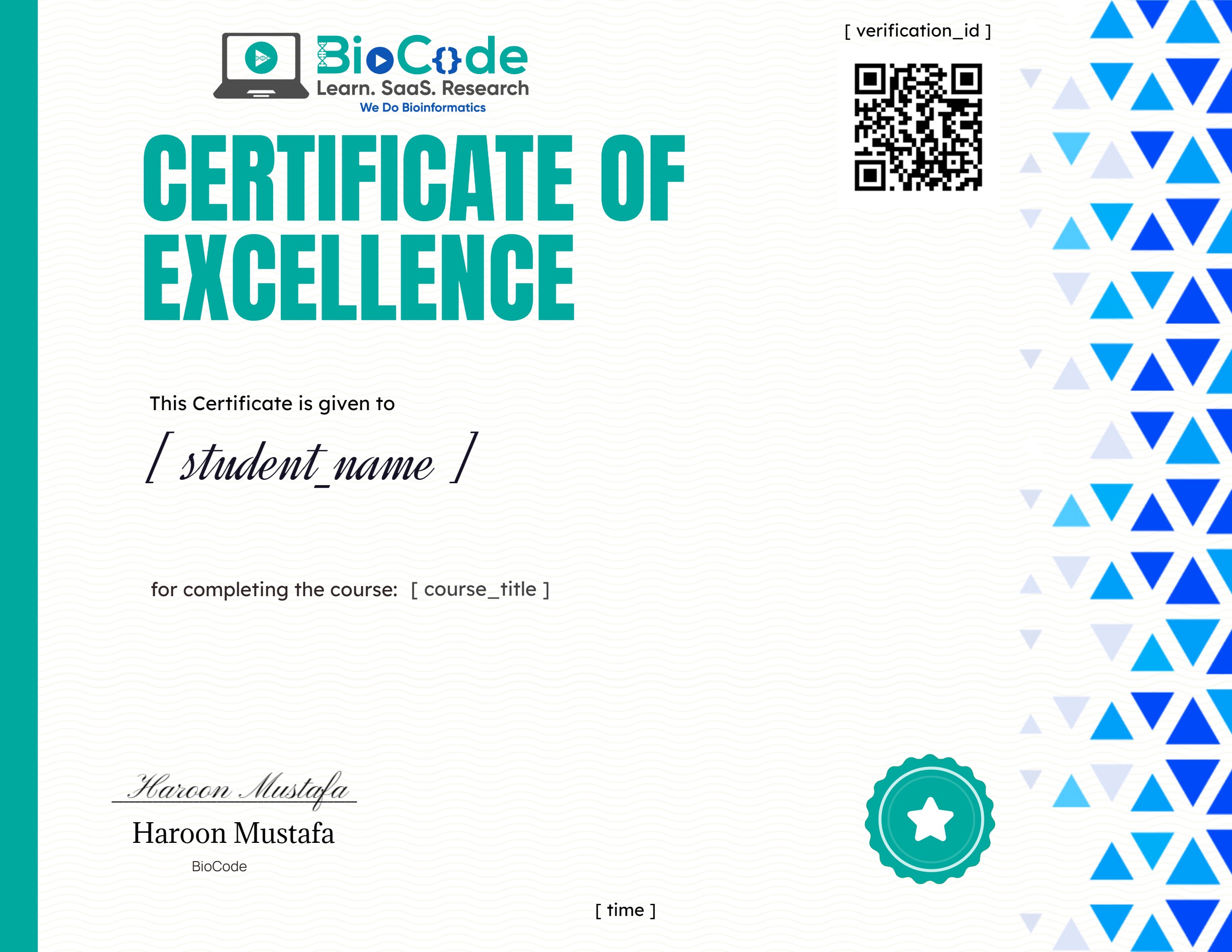Introduction to Bioinformatics & Its Advancements

About Course
BioCode is providing a free course which carefully selects multiple videos from different courses so that you can assess the quality and learning experience from a diverse range of our courses. Once you have gone through the free course, you can then pursue a specific course to your liking. If you want to access all courses through a single purchase, considering going with our All-Access Membership: https://biocode.org.uk/membership-plans/ – if you are interested in a specific course, then visit: https://biocode.org.uk/courses
Explore the field of bioinformatics with our free course. It covers various topics and offers hands-on experiences. Through curated videos, gain insights into cancer biology, data analysis techniques, molecular modeling, variant calling, single-cell RNA sequencing, and more.
In the first section, “Introduction to Cancer Biology, Cancer Types, and Abnormal Cell Cycles,” understand the basics of cancer biology. Learn about different cancer types and how abnormal cell cycles contribute to cancer development.
Dive into data analysis with “In-depth Introduction to RNA-Seq Data Analysis.” Learn effective RNA-Seq data analysis by mapping preprocessed reads to a reference genome using popular tools like HISAT2, TOPHAT2, BOWTIE2, and STAR.
Build on this foundation with Next-Generation Sequencing (NGS) and variant calling. Explore variant calling techniques and the role of Single Nucleotide Polymorphisms (SNPs) in genetic variation.
Discover gene expression analysis, specifically single-cell RNA sequencing (RNA-seq). Uncover the power of studying individual cells and gain insights through filtering data, clustering cell subpopulations, and comparing bulk RNA-sequencing with single-cell RNA-sequencing.
Learn gene ontology analysis using GeneCodis4, a powerful tool for gene functional annotation. Analyze serum level differences between healthy individuals and patients using swarm plots, a visualization technique.
For structural bioinformatics enthusiasts, explore hydrogen bond interactions in 3D structures. Focus on an antibiotic-resistant fungal mutant protein and understand the importance of hydrogen bonds in molecular interactions.
Get insights into bioinformatics freelancing, including opportunities and challenges.
Finally, learn energy minimization techniques for protein structures in simulations. Enhance your understanding of molecular modeling and its applications.
By the end of this free course, you’ll have gained valuable knowledge and practical skills in bioinformatics. Whether you’re interested in cancer research, data analysis, structural biology, or freelancing, this course provides a strong foundation. Join us on this exciting journey into the world of bioinformatics!
The course is totally free and does not require any payment.

Course Content
Free Course
-
Introduction To Cancer Biology, Cancer Types And Abnormal Cell Cycles
18:17 -
Loop Modeling – Fixing the Unmodelled Regions in Target Proteins
19:22 -
In-depth Introduction to RNA-Seq Data Analysis
44:08 -
Practical: Mapping Preprocessed Reads Against a Reference Genome Using HISAT2, TOPHAT2, BOWTIE2, STAR
31:51 -
In-depth Introduction to NGS and Variant Calling
20:12 -
Single Nucleotide Polymorphisms: An Introduction to SNPs and Their Types
31:22 -
Introduction to Single-Cell RNA-seq, Its Pipeline and Analysis
23:34 -
Bulk RNA-sequencing vs. Single-Cell RNA-sequencing
21:50 -
Hands-on: Filtering Dead Cell and Low Quality Data
22:39 -
Hands-on: Clustering of Cell Subpopulations
09:47 -
Hands-on: Gene Ontology Analysis Using GeneCodis4
14:21 -
Comparison of Serums Levels in Healthy and Patients Through Swarm Plots
08:34 -
How to Identify Hydrogen Bond Interactions in 3D Structures (Antibiotic Resistant Fungal Mutant Protein)
17:21 -
In-Depth Introduction to Bioinformatics Freelancing
31:44 -
Energy Minimization – Relaxing and Fixing the Structure for Simulation
11:25
Earn a certificate
Add this certificate to your resume to demonstrate your skills & increase your chances of getting noticed.





